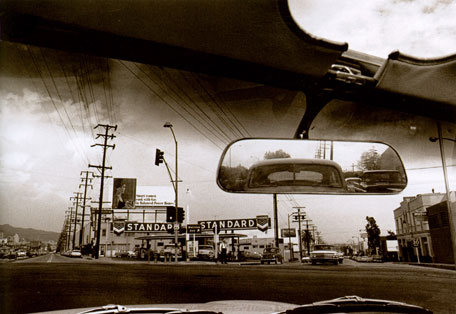Hot spots
dal 12/2/2009 al 2/5/2009
Segnalato da
Lygia Clark
Helio Oiticica
Ivan Serpa
Lucio Fontana
Piero Manzoni
Michelangelo Pistoletto
Giulio Paolini
John Baldessari
David Hockney
Dennis Hopper
Edward Kienholz
12/2/2009
Hot spots
Kunsthaus Zurich, Zurich
The most intriguing artistic movements do not arise exclusively in world capitals like Paris, London or New York. The second half of the 20th century was a particularly fertile period in the provinces, with crucial ideas emanating from such peripheral places as Rio de Janeiro, Los Angeles, Milan and Turin. The exhibition demonstrates the way these cities developed, between the mid-1950s and the late 1960s, into centres of experimentation and breeding grounds for artistic trends with international scope. Among artists: Helio Oiticica, Lygia Clark, Lucio Fontana, Piero Manzoni, Mario Merz, David Hockney, Ed Ruscha and James Turrell.

From 13 February to 3 May 2009, the Kunsthaus Zürich presents ‘Hot Spots’,
an exhibition devoted to the artistic avant-garde of the 1950s and 1960s in Rio
de Janeiro, Milan and Turin, and Los Angeles. The show features outstanding
works of art, photography, architecture and design by such world-renowned
figures as Hélio Oiticica, Lygia Clark, Lucio Fontana, Piero Manzoni, Mario
Merz, David Hockney, Ed Ruscha and James Turrell.
The postwar period saw Paris and New York, the traditional capitals of the
creative world, joined by fresh hot spots on the artistic landscape.
RIO DE JANEIRO: NEW CONCRETISM, BOSSA NOVA, CINEMA NOVO
Rio de Janeiro’s all-pervasive creative atmosphere during the 1950s and early
1960s produced a hotbed of culture. The buzzword was new, as in neo-
concretism in art and architecture, bossa nova (new wave) in music, and cinema
novo in the film world. A specifically Brazilian design was created, featuring
formal concision and an emphasis on construction. The artistic movement
known as neo-concretism was Brazil’s first contribution to a universal visual
idiom. Hélio Oiticica, Lygia Clark and other pioneers of the geometrical abstract
style reinterpreted the work of Piet Mondrian and Max Bill for a new generation,
with an increasing focus on issues of space and spatiality.
MILAN/TURIN: FROM THE INFORMALE TO ARTE POVERA
Milan and Turin, in which the new Italian artistic identity emerged between 1958
and 1968, are emblematic of a decisive moment in Italian art. Milan led the way,
as Lucio Fontana and Piero Manzoni developed the monochrome, minimalism,
and a painting style which went beyond the frame to occupy space, and thus
broke with Italy’s artistic legacy. Turin, a vibrant industrial centre, was next to
take up the mantle as Italy’s artistic Mecca, as the Informale gave way to Arte
Povera. The new movement was characterized by its use of ‘poor’ materials,
whether natural or artificial (as represented by Mario Merz), as well as by its
utopian stance on politics and the ecology (as evidenced by Michelangelo
Pistoletto).
LOS ANGELES: POP, MINIMALISM, ARCHITECTURE
The postwar art scene in Los Angeles interspersed dreams of felicity with
nightmarish visions. The promise of ‘sun and surf’ and happiness in Hollywood was juxtaposed with the exploitation of people and their dreams, as artists in
L.A. oscillated between utopian projections and sarcastic responses to popular
culture. James Turrell and Robert Irwin, for instance, drawing their inspiration
from the light and landscape on the Pacific coast and in the deserts of the
southwest, celebrated immateriality and physical liberation, while Ed Ruscha
and David Hockney, among others, took southern California’s cults of the body,
the automobile, and the star literally and began to play with the symbolic
vocabulary arising from these phenomena. This same interplay was also
reflected in contemporary Californian architecture, as represented by ‘Case
Study Houses’, documented by Julius Shulman in iconic architectural
photographs.
META-EXHIBITION DEMONSTRATES AFFINITIES
This exhibition of about 270 works is a collaboration with the Moderna Museet,
Stockholm, where Paulo Venancio Filho and Annika Gunnarson (Rio de Janeiro),
Luca Massimo Barbero and Cecilia Widenheim (Milan/Turin), and Lars Nittve
and Lena Essling (Los Angeles) conceived it as ‘Time and Place’, a series of
three independent presentations. Tobia Bezzola coordinated curatorship of the
show – a ‘meta-exhibition’ – at the Kunsthaus Zürich, which unites three
snapshots of as many artistic centres into an impressive triptych.
Our three ‘hot spots’, after all, were linked by networks of personal contact,
multiply interwoven in their aesthetic exchanges as well as by means of a shared
theory of production. This is manifest in the joint effort, undertaken in the
ostensibly disparate art worlds of Rio de Janeiro, Milan and Turin, and Los
Angeles, to overcome the conventional canvas.
AUDIOGUIDE AND CATALOGUE
Those keen to pursue the subject of the show further may avail themselves of an
audioguide (Eng/Ger, included in the price of admission); an exhibition
catalogue, Hot Spots (320 pages, approx. 170 illustrations), is also available at
the Kunsthaus shop at a special price of CHF 49. With an introduction by Tobia
Bezzola, it contains essays by Paulo Venancio Filho, Annika Gunnarson and
Ferreira Gullar (Rio de Janeiro), Luca Massimo Barbero and Francesca Pola
(Milan/Turin), and Lars Nittve and Cécile Whiting (Los Angeles).
Supported by Zurich Insurance Company.
Image: Dennis Hopper, Double Standard, 1961
For further information and visual materials, please contact
Kunsthaus Zürich, Kristin Steiner, Press and Communication kristin.steiner@kunsthaus.ch, Tel. +41 (0)44 2538413
Kunsthaus Zürich, Heimplatz 1, CH–8001 Zurich
Open Sat, Sun, Tues 10 a.m.–6 p.m., Wed, Thurs, Fri 10 a.m.–8 p.m.
Holidays: Easter 9-13 April, 1 May: 10 a.m. - 6 p.m.
Admission including audioguide in English and German: CHF 18.-/12.-(concessions)/CHF 14.- per head for groups of 20 or more. Subject to change.



